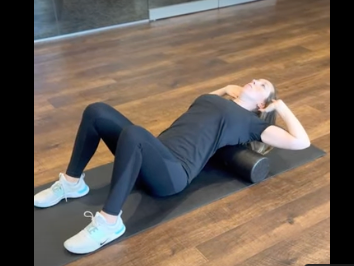Flexibility vs Mobility: What to Know
- noelle822
- Oct 7
- 3 min read
As we get older, staying active and injury-free becomes less about pushing harder and more about moving smarter. For many of us, understanding the difference between flexibility and mobility is key to maintaining strength, balance, and overall healthy movement.
Flexibility vs. Mobility: What is the Difference?
Flexibility is the ability of your muscles to lengthen. It’s passive, think stretching your hamstrings by touching your toes. Flexibility is important, but it’s only part of the equation. Poor flexibility can lead to:
Tightness throughout your muscles
Strain and pulled muscles
Mobility is how well a joint moves through its full range of motion with control. This includes flexibility but adds strength, coordination, and stability. If flexibility is about how far you can move, mobility is about how WELL you can move. Poor mobility can lead to:
Compensatory movement patterns
Increased risk of falls or injury
Reduced performance in both daily life and recreational activities
Below are some real life examples of flexibility and mobility:
You may be able to touch your toes (flexibility), but can you bend down and pick something up with good form (mobility)?
You might stretch your shoulders easily, but can you reach overhead under load, like lifting a suitcase into an overhead bin or putting away dishes in a cabinet?
Why It Matters
As we age, joint stiffness and muscle imbalances creep in, limiting both flexibility and mobility. This is a normal part of aging and can affect everything from your golf swing to your ability to hike or garden without discomfort. However, both mobility and flexibility can be improved, at any age. There is a common misconception that as we age we lose our flexibility and mobility, which is true to some extent but we do not have to settle for this. If we stay active with a focus on mobility and flexibility exercises, we can maintain our ability to be limber and move with ease and control resulting in overall decreased pain. The key is incorporating exercises daily into our routine to keep us as mobile and flexible as we can. Some key areas to focus on are:
Dynamic stretching before activity (leg swings, arm circles)
Strength training through full ranges of motion (e.g., deep squats, lunges)
Joint-specific mobility work (shoulder openers, reach and roll, thoracic extension or hip circles)
Post-workout flexibility routines (static stretches to cool down and foam rolling)
Here are some of my favorites:
Standing Hamstring stretch:
Stand with your leg elevated on a surface with knee straight, feel a pull/stretch on back of leg and hold for 30 sec to 1 min for, repeat 2-3 times

Cat Cow:
Get on all fours, extend your head while letting your hips/pelvis drop. Making a "sway" back like a cow. Then arch your back and drop your dead, this will resemble the "cat". Do 15 -20x each direction.


Thoracic extension over a foam roller:
Grab a foam roller and lay it on the ground horizontal to your body. Bring hands behind your head and then extend your upper back of the foam roller. Repeat 20x.

Flexibility without mobility is like having a fancy car with no steering control. To stay active and independent, everyone have a combination of stretching, strengtheing, cardio and mobility exercises to help longetivity and your ability to move happy and healthy! The goal is not just touching your toes, it’s living with freedom, ease, and confidence in your body. Hope this helps!
Stay moving and Happy!
Dr. Noelle O’Hara, DPT
.jpg)






Comments